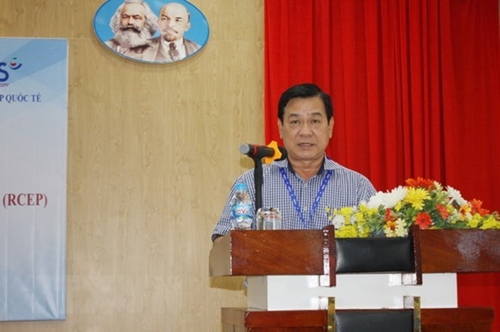During a conference held in HCM City on March 24 to popularize the RCEP, deputy head of the HCM City Export Processing and Industrial Zones Authority (Hepza) Dao Xuan Duc said that amid the COVID-19 pandemic and the emergence of protectionism, the RCEP signed between ASEAN and Japan, New Zealand, Australia, China and the Republic of Korea on November 15, 2020 is considered a new driving force for international trade.
    |
 |
|
Deputy head of the HCM City Export Processing and Industrial Zones Authority Dao Xuan Duc speaks at the event. |
With commitments to opening markets to goods, services, and investment, simplifying customs procedures, and establishing rules of origin to facilitate trade and reduce trade barriers, the deal is expected to create the world’s largest trade area and promote the development of value chains in the region and the world, thereby propelling the economic growth of ASEAN member states, including Vietnam and partners.
Tran Ngoc Binh, chief of the HCM City Office of Export-Import Management under the Ministry of Industry and Trade’s Department of Export and Import, said that with the RCEP, Vietnam could enjoy tax incentives when exporting to Japan after importing cloth from anywhere, then cutting and sewing to make products.
Similar to aquatic products, Vietnam could import breeding varieties from other countries, raise them domestically, and then export them to enjoy preferential tariffs.
Nguyen Anh Duong from the Central Institute of Economic Management said that with signing of the RCEP shows that member states look toward the commitment to further liberalizing trade in goods and services and investment, towards fairer development.
RCEP member countries will have about 150 million high-income earners within the next three years, he said, who will shape new consumption trends, focusing on smart technological devices and high-quality products.
He also mentioned challenges such as rising trade deficits. In the past, Vietnam only ran a deficit with China and ASEAN, but has recently done so with Australia, New Zealand, and Japan, resulting in the risk of facing trade defense lawsuits if imported materials for production and export are not brought under control.
Experts suggested Vietnamese firms devise their own plans to improve export capabilities, meet technical requirements, and regularly update trends regarding non-tariff measures to optimize benefits brought about by FTAs.
Source: VNA